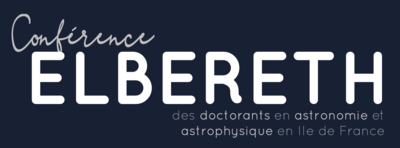Orateur
Description
In recent years, the interest in high-resolution UV spectropolarimetry in space has greatly increased. Space mission projects such as Arago (ESA) and Pollux on LUVOIR (NASA) are planned to launch in the 2030-2040 decades. UV spectropolarimetric observations in space will allow the study of stars, exoplanets, and their environments, especially stellar magnetic fields. Existing ground-based high resolution spectropolarimeters only work in the Visible or IR light, due to UV light getting absorbed in the Earth’s atmosphere. Thus, LESIA has been developing the first prototypes of UV spectropolarimeters. Moreover, the CASSTOR nanosatellite is proposed to serve both as a technological and scientific demonstrator for high-resolution UV spectropolarimetry in space. The project is currently in phase 0/A, funded by CNES and planned to be launched in 2026.
In this presentation, two aspects will be discussed. The first one is the thermal design and simulation of CASSTOR. Thermal management aims to keep the temperature of the CMOS detector stable and under 260 K as the dark current is highly affected by temperature. In addition, thermal elasticity has a great impact on the optics while spectrum stability is required at sub-pixel level during a spectropolarimetric measurement. Passive thermal design using a radiator, thermal strap, and outside coatings were studied along with the active thermal control device such as a heater. The radiator is put on the side of the nanosatellite pointing at the star as it undergoes the least effect from both the Earth and Sun. In the simulation, the solar flux, albedo, Earth infrared, and internal heat were considered as input heat sources, while radiation to outer space is considered as output in a thermal environment. I will then discussed the design of a UV spectropolarimetry experiment that I will built in thermal vacuum to test the UV polarimeter. This experiment will simulate CASSTOR to increase its technological readness level and confirm the precision of the measurements.
| Field | Instrumentation |
|---|

